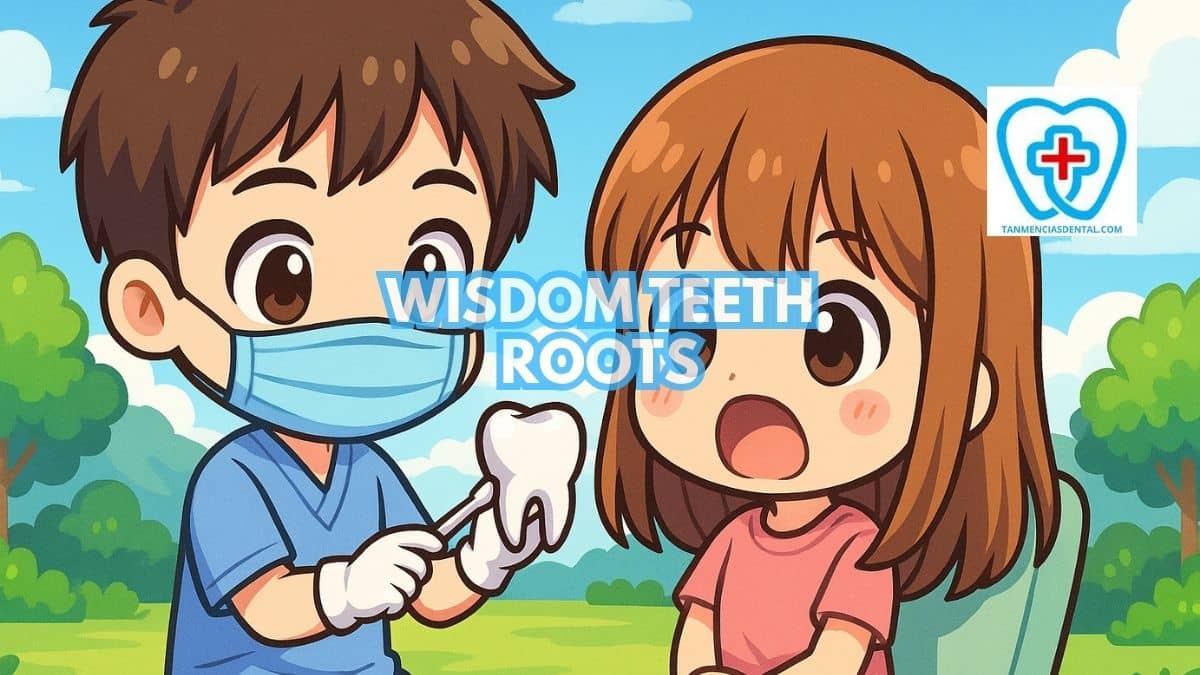Wisdom teeth roots often grow unpredictably and vary greatly in their shapes, lengths, and positions.
Their unusual forms can lead to problems when dentists attempt to remove these teeth, thereby increasing the potential for complications.
The difficulties from these unique root structures can include prolonged surgery times, unexpected pain, and damage to nearby areas of the mouth.
Each patient’s situation differs depending on root complexity and tooth position, which requires careful pre-surgery checks.
Clearly identifying root challenges ahead of time helps dentists manage extraction safely and reduces discomfort for patients.
1. Complex and Unusual Root Shapes May Complicate Extraction
Wisdom teeth roots sometimes form unusual shapes like curves, hooks, or sharp angles.
These shapes can tightly grip the surrounding bone, making the tooth hard to remove without damaging nearby tissues.
Roots with multiple branches or twists further complicate the extraction process, requiring dentists to spend extra time carefully loosening each section.
Such roots increase the chance that part of the tooth could break off, leaving behind small pieces that might cause infection later.
To handle these complexities, dentists often use specialized instruments or techniques that safely loosen and remove difficult roots.
🦷 Are Electric Toothbrushes Waterproof? Don’t Let the Truth Shock You!
2. Risk of Root Fracture During Removal Increases Complication Potential
Sometimes wisdom teeth roots are fragile and may break during extraction, complicating the process.
A fractured root piece remaining in the gum or bone can cause inflammation, pain, or even infection after surgery.
Dentists typically must locate and remove these fragments to avoid future complications, which often requires additional procedures or imaging.
Preventing root fractures involves applying pressure carefully and using gentle extraction movements, rather than using excessive force.
Understanding how fragile the roots are before surgery enables dentists to choose safer extraction methods to avoid breaking them.
🦷 How Soft Foods After Wisdom Teeth Removal Speed Up Your Recovery
3. Close Proximity to Facial Nerves Raises Concerns
Wisdom teeth roots that grow close to important nerves in the jaw can cause serious problems if disturbed during extraction.
Damage to these nerves can lead to numbness, tingling sensations, or even temporary or permanent loss of feeling in areas like the tongue, lips, or chin.
Dentists carefully evaluate the exact location of these nerves through detailed imaging before attempting extraction.
Special care and techniques, such as gentle extraction methods or partially removing teeth, help protect nerves from accidental harm.
Discussing nerve risks openly with patients helps them understand potential outcomes and prepare accordingly.
🦷 How to Close Gaps in Your Teeth Without Braces
4. Potential Damage to Neighboring Teeth from Root Positioning
When wisdom teeth roots angle sideways or lean against adjacent teeth, they create a risk of damage during extraction.
Removing a wisdom tooth in this situation may accidentally affect the nearby tooth’s structure or roots, causing discomfort or requiring additional dental treatments afterward.
Dentists carefully examine X-rays to clearly see these risky root positions before proceeding.
To protect neighboring teeth, dentists often employ slow, controlled extraction methods or may divide wisdom teeth into smaller parts for removal.
This careful approach ensures minimal harm to surrounding healthy teeth.
🦷 How Long Can You Go Without Brushing Your Teeth?
5. Increased Chance of Postoperative Infection Linked to Roots
Roots with complicated shapes can trap bacteria or small fragments of tissue deep within the socket after the tooth has been removed.
These hidden areas become breeding grounds for infection, causing swelling, pain, or even fever if left untreated.
Dentists focus on carefully cleaning and examining the extraction site to remove any tiny root pieces or tissue debris.
To reduce the risk of infection, dentists might prescribe antibiotics or recommend rinsing solutions to keep the area clean during healing.
Promptly addressing any signs of infection helps ensure smooth recovery and prevents future complications.
🦷 How Can You Whiten Your Teeth With Braces?
6. Rare Risk of Jawbone Fracture During Root Extraction
Although uncommon, jawbone fractures can occur during the extraction of deeply embedded or severely impacted wisdom teeth roots.
These fractures happen if the tooth or roots extend deeply into the bone, weakening the jaw during removal.
Dentists pay special attention to X-rays and other images to determine the risk level for jawbone fractures beforehand.
When facing this risk, dentists might opt for a gentler approach, removing teeth slowly or in segments to prevent excessive force on the bone.
Clearly explaining this rare but serious complication helps patients feel more informed and prepared for the procedure.
🦷 How to Safely Remove Food Stuck in the Wisdom Teeth Hole Without Damaging the Healing Site
7. Longer Surgery and Recovery Time Due to Root Challenges
Complex wisdom teeth roots typically require more surgical steps, extending the time spent in the dentist’s chair.
Longer surgeries often lead to increased swelling, soreness, and longer healing periods.
Dentists explain these possibilities to patients beforehand so they can plan appropriately for extended rest or reduced activities after surgery.
Detailed instructions on care after surgery, including managing pain and swelling, are essential to aid faster healing.
Proper planning ensures patients know what to expect and are less concerned by longer-than-average recovery times.
🦷 What Should You Do If You Notice Your Teeth Aching With A Cold?
8. Higher Likelihood of Dry Socket from Difficult Root Extractions
When extracting teeth with complicated roots, there’s a greater chance that a blood clot may not form properly or could dislodge, leading to dry socket.
Dry socket is a painful condition in which the extraction site does not heal correctly, exposing nerves and bones to air and causing severe discomfort.
Dentists minimize this risk by ensuring gentle handling during extraction and carefully cleaning the area after the procedure.
Patients receive specific advice about avoiding behaviors like smoking or vigorous rinsing that can dislodge the clot.
Understanding and following dentist guidelines significantly lowers the chance of experiencing dry socket.
🦷 How Full-Arch Dental Implants Restore Your Smile and Confidence
9. Importance of Detailed Preoperative Imaging for Safe Extraction
Accurate and detailed imaging before wisdom teeth extraction greatly reduces unexpected problems during surgery.
Modern imaging methods, such as panoramic X-rays or CT scans, help dentists see the exact shapes, angles, and positions of complicated roots.
Clearly visualizing these details allows dentists to plan the best approach and choose the safest extraction techniques.
Without thorough imaging, dentists might unknowingly encounter challenges during the extraction that could have been prevented.
Clear pre-surgery images help dentists better inform patients about their specific risks and expected outcomes.
🦷 Can Dental Implants Screws Fail? Common Causes and How to Prevent Complications
10. Impact of Surgeon’s Experience on Outcomes When Dealing With Roots
An experienced dental surgeon significantly reduces risks when handling challenging wisdom teeth roots.
Surgeons who regularly manage complex extractions can quickly recognize and adapt to unexpected issues during the procedure.
Less experienced dentists may struggle more, potentially leading to increased discomfort or complications for the patient.
Patients benefit greatly from choosing surgeons who specialize in difficult tooth removals and can confidently use advanced techniques.
Asking about the surgeon’s experience with complicated extractions beforehand can help patients feel secure about their procedure.
🦷 Experienced Dental Professionals in Marikina City
👨⚕️ Conclusion
Clearly understanding the challenges related to wisdom teeth roots helps both patients and dentists reduce risks during extractions.
Dentists carefully evaluate each patient’s unique root structure through detailed imaging and planning to minimize potential issues.
Choosing an experienced surgeon, being aware of possible complications, and following post-surgery care instructions improve healing and comfort.
When wisdom teeth roots are approached with thorough preparation, the chances of complications significantly decrease.
Patients who actively participate in discussions about their extraction benefit from safer and smoother procedures.
😊 Self-Promotion
Visit us at Tan-Mencias Dental Clinic at 44 G. Del Pilar Street, Parang, Marikina City for friendly and trusted dental care.
We’re here to help you with cleanings, checkups, braces, and more.
If you have any questions, you can call us at 0917-145-1074.
Feel free to send us a message on our Facebook page or fill out the contact form on our website.
We’re always happy to help you smile with confidence!

